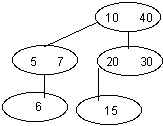
Spring Semester, 2001
Assignment 1
© 2001, All Rights Reserved, SDSU & Roger Whitney
San Diego State University -- This page last updated 13-Feb-01

|
CS 683 Emerging Technologies: Embracing Change Spring Semester, 2001 Assignment 1 |
|
|---|---|---|
|
© 2001, All Rights Reserved, SDSU & Roger Whitney San Diego State University -- This page last updated 13-Feb-01 |

